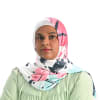‘Bone attacks’: Osteoporosis groups call for more awareness, better management of chronic disease
Osteoporosis often gets “submerged” among the multiple other diseases a patient has, says the head of one organisation.

The incidence of fractures from osteoporosis is projected to rise in Asia by about 60 per cent by 2035. (Illustration: iStock/sorbetto)
SINGAPORE: With the incidence of fractures from osteoporosis projected to rise in Asia by about 60 per cent by 2035, organisations are calling for urgent attention to bone disease.
“We're starting to call osteoporotic fractures bone attacks just to give them the same amount of seriousness that a heart attack has,” said Dr Manju Chandran, chairperson of the Asia Pacific Consortium on Osteoporosis (APCO).
“People can even die after hip fracture, which is not well-known. People think ‘oh, I just have a fracture. I can get fixed and I can leave the hospital’.”
While there are ways to prevent and treat osteoporosis, there is a lack of awareness, she said.
“It's not a lack of medications. It's just a lack of awareness both among … physicians and treating surgeons, (and) also among patients,” she said.
Underdiagnosis is “rampant”, Dr Manju added.
“People just don't think that osteoporosis is a serious disease and osteoporosis, unfortunately, is what we call a silent disease. You don't even sometimes know you have osteoporosis until you have a fracture,” she said.
Stressing the seriousness of the disease, Dr Philippe Halbout, chief executive of the International Osteoporosis Foundation, said that in countries with access to healthcare, one in four patients suffering from a hip fracture die within a year.
Of the three remaining patients, two will require life assistance for their daily activities, he said. He added that one in three women and one in five men aged over 50, will suffer from at least one osteoporotic fracture.
“Clearly, this is a huge burden that we are facing,” said Dr Halbout, who is also executive committee member of APCO.
Both experts were speaking to CNA’s Singapore Tonight last Friday (Dec 9), ahead of an APCO scientific summit.
SITUATION IN ASIA PACIFIC
While the global population is generally ageing, the trend is especially stark in Asia Pacific, said Dr Halbout.
By 2050, one in four people in the region will be aged 60 and above, he noted.
"Within the same time frame, we're going to observe a huge number of hip fractures occurring worldwide, between 4.5 to 6.3 million fractures," said Dr Halbout.
Half of them are going to happen in the Asia Pacific, including Singapore, he added.
"If nothing is done, we're not going to have to manage a big challenge. We are going to face a real crisis," he cautioned.
LACK OF PRIORITY, CONNECTION
Despite the sobering statistics, Dr Halbout said 80 per cent of patients who get admitted to the hospital with a fracture leave without a diagnosis of osteoporosis.
There are many reasons for this, “but one of them is definitely the lack of prioritisation from all the stakeholders, including the healthcare professionals”, said Dr Halbout.
Another factor is the lack of connection between specialised departments in a hospital, he added. While orthopaedic doctors do an “incredible job” of fixing the fracture, other specialists like rheumatologists, geriatricians and nutritionists are not involved, noted Dr Halbout.
In a bid to reduce the risk of patients sustaining further fractures, the community is implementing a “fracture liaison service”, he said.
The experts said that it is “extremely frustrating” that despite the availability of tools to manage and treat osteoporosis globally, the disease gets “submerged amongst the multiple other diseases which a patient has”.
RISK FACTORS FOR OSTEOPOROSIS
Peak bone mass is attained somewhere between 25 and 30 years old, said Dr Manju.
In people with osteoporosis, bone loss exceeds bone formation, she said.
However, the disease does not affect everybody, and is dependent on various risk factors, she said.
While some are beyond one’s control, such as ageing, being female and being Asian or Caucasian, there are others that can be modified, including living a sedentary lifestyle and having a low-calcium diet, said Dr Manju.
Once diagnosed, there are several effective medications for the treatment of the disease, said Dr Manju.
Some aim to prevent further bone loss or decrease the rate of bone loss. There are also treatments to build new bone, she said.
However, Dr Manju said: “Prevention is always better than cure.”















